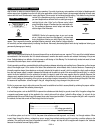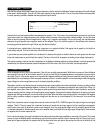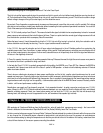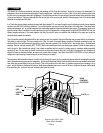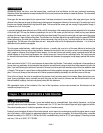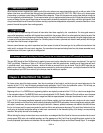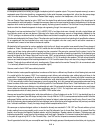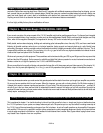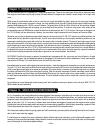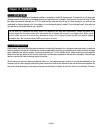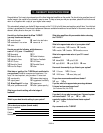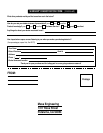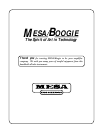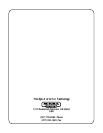
When evaluating and choosing components, specs may be used as a starting point to reduce the number of options to a realistic
figure, but then it becomes vitally important to remember how these components will be ultimately used: for the joy of music in a home
environment, as opposed to on a test bench in an anechoic chamber.
We thus encourage you to trust your dealer’s advice with regard to system compatibility, which is based on a combination of elemental
specs and the specialty retailers’ experience. This will ensure a good match, beyond which this owners manual contains everything
you need to know about operating your new component.
It is a sad truth amongst audiophiles that, during our sometimes compulsive search for perfection, we unlearn the art of listening from
the heart and act like judges during a music competition or audition, looking for things to criticize rather than allowing the music to take
a hold over our emotions.
So we haven’t included the usual spec sheet with this manual. Besides the reasons already given, the unique flexibility of the TIGRIS
would necessitate 12 sets of most measurements to address the effects of all possible settings - frankly more information than we
think meaningful.
We are hoping that instead, you trust your ears and your heart’s response that the TIGRIS delivers where it counts: to help create
the illusion that Louis Satchmo Armstrong or Sasha Heifetz ( or any of your favorite musicians ) have, magically, been transported into
your living room for a private performance at your beck and call.
If you can close your eyes and see the performers with your ears as if they were truly there with you, living and breathing and playing,
then our specs have succeeded.
For those wanting a little bit more information about the basic construction of the TIGRIS, here are a few highlights which cover
some aspects previously discussed:
• true dual-mono design with separate power- and output transformers for each channel and mirror-imaged circuit board layout
• three-ounce copper traces with plated-through epoxy circuit board
• “flying leads” point-to-point hand wiring in critical places
• 1% metal film resistors and audiophile-grade capacitors
• proprietary ceramic tube sockets with silver-plated contacts
• gold-plated fine-thread 4-way speakers binding posts accommodate the bulkiest terminations
• dual warm / operate switches allow instantaneous playback without thermal stabilization time lag
• Class A, auto-bias push-pull design with ultra low-noise preamplification stage
• proprietary Tandem-State Imaging
• variable output power: 35 Watts per Ch. full Pentode, 28 Watts per Ch. 2/3 Pentode and 20 Watts per Ch. 2/3 Triode
• 4 position adjustable Negative Feedback, from Zero Feedback to Stage III
in full Pentode, stage I = 5dB, stage II = 8dB and stage III = 12dB
in 2/3 Pentode, stage I = 4dB, stage II = 7dB and stage III = 10dB
in 2/3 Triode, stage I = 3dB, stage II = 5dB and stage III = 8dB
• massive 8-pole industrial switch converts Integrated into dedicated Headphone amplifier which is driven from the entire array
of output power tubes
• 4 line level inputs, 1 fixed output, 1 variable buffered output with dedicated Level Set attenuator
• ground switch
• detachable power cord
• two color options: gold or silver anodized front panel, Front Panel controls and full-width transformer cover
dimensions: 17.25 inches wide x 16.25 inches deep by 6 inches high
(depth measurement includes RCA output jacks and frontal controls)
• weight: 35 lbs
PAGE 22
Chapter 12 - SPECS VERSUS PERFORMANCE: (Continued)
Chapter 13 - BASIC SPECS :



